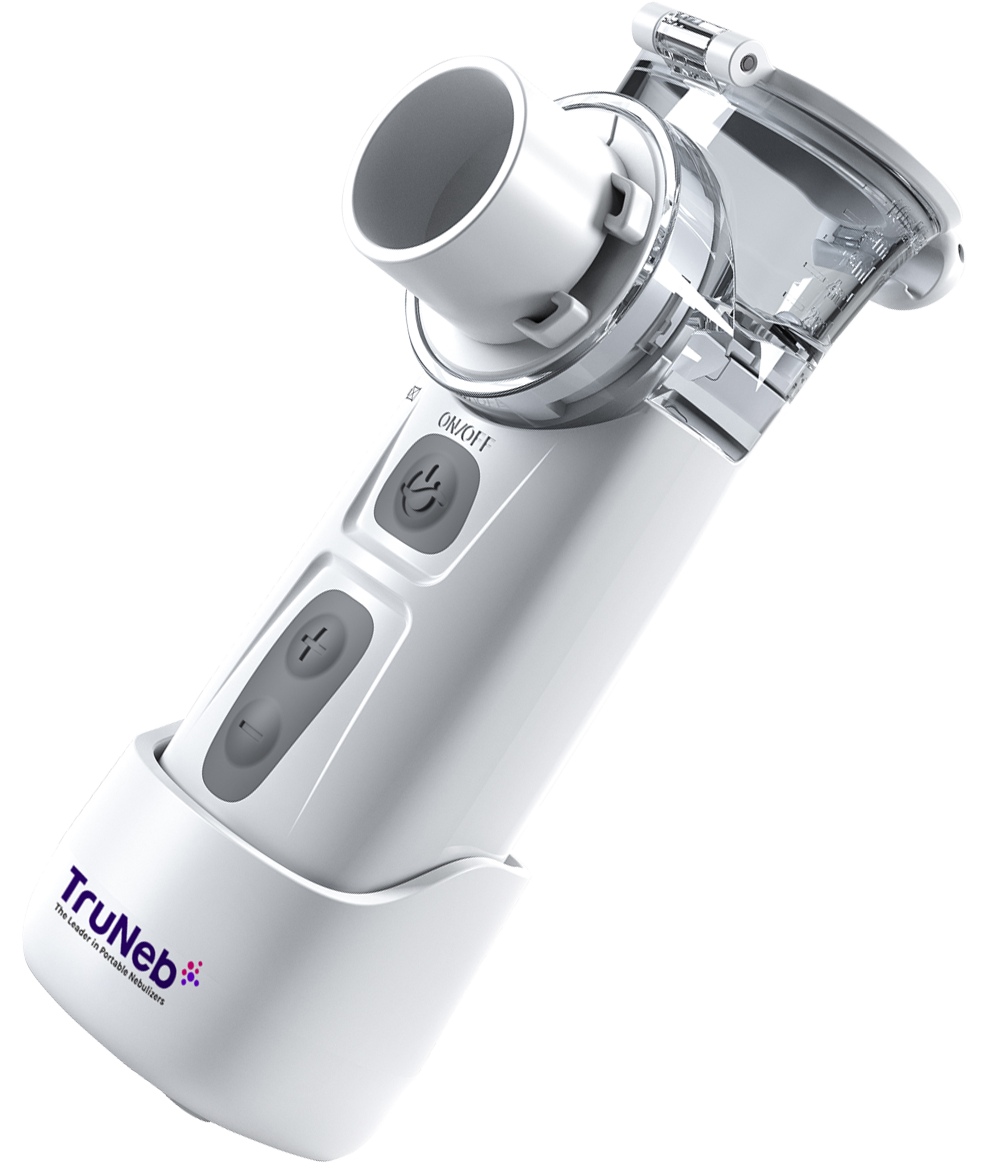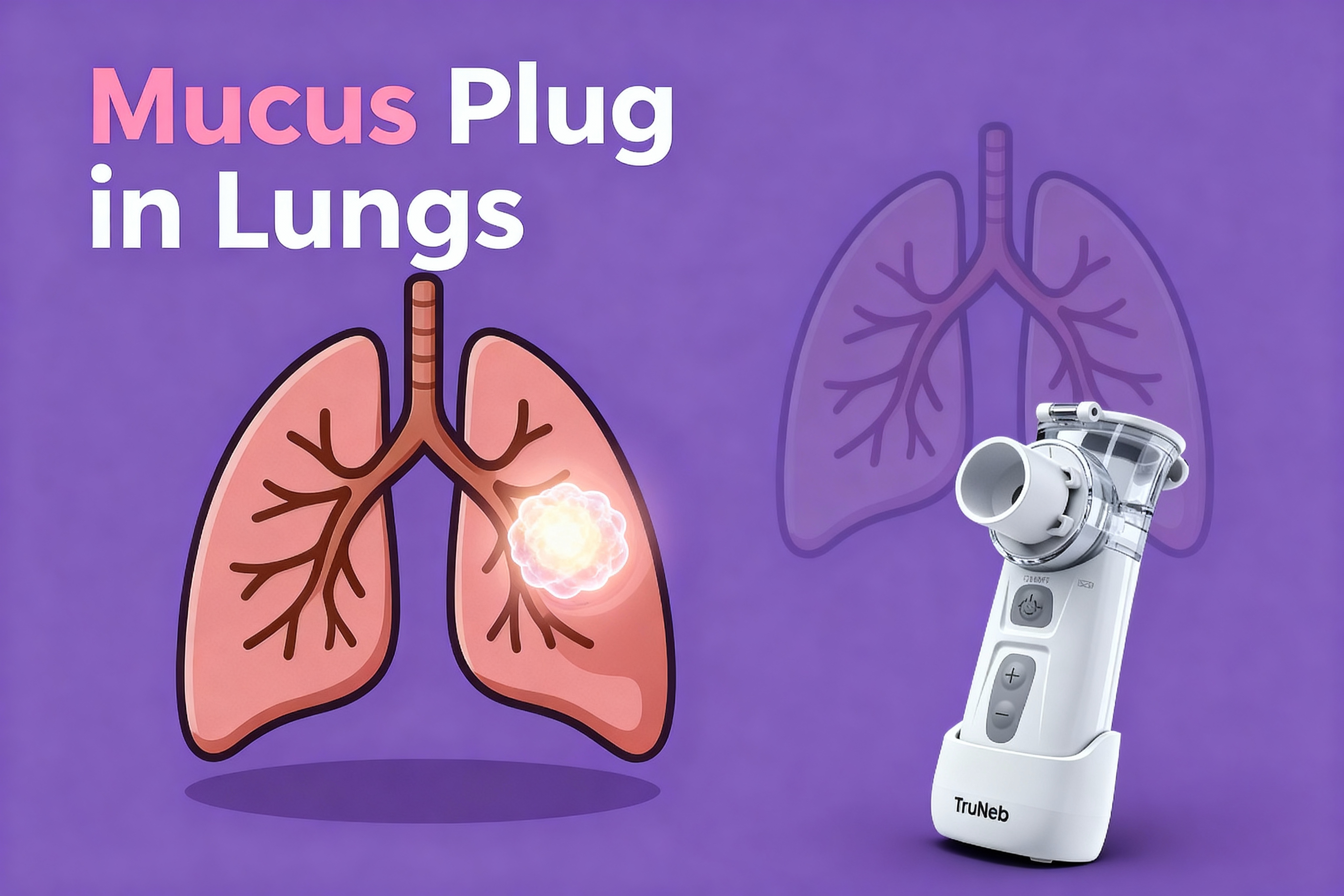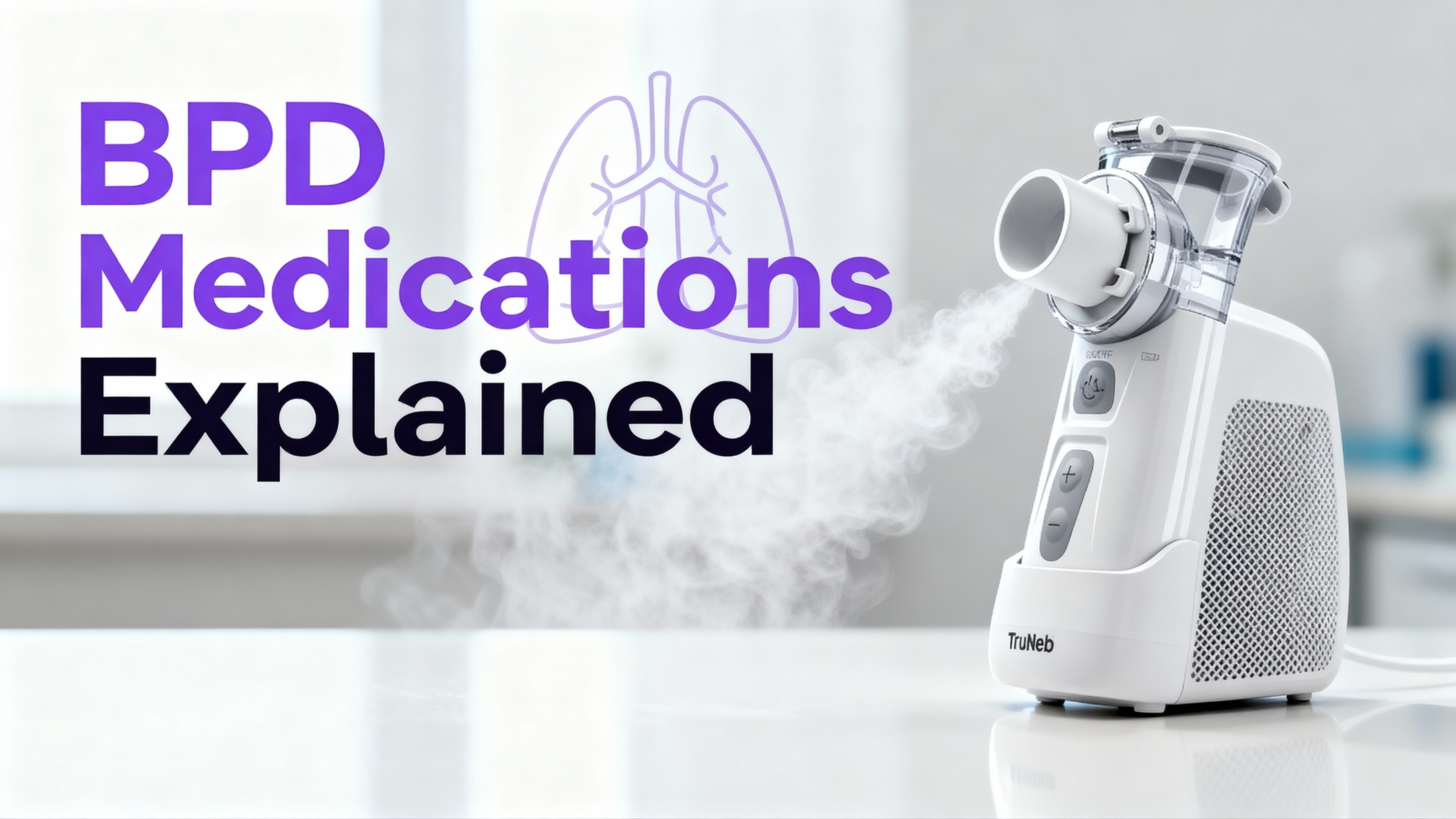On this page
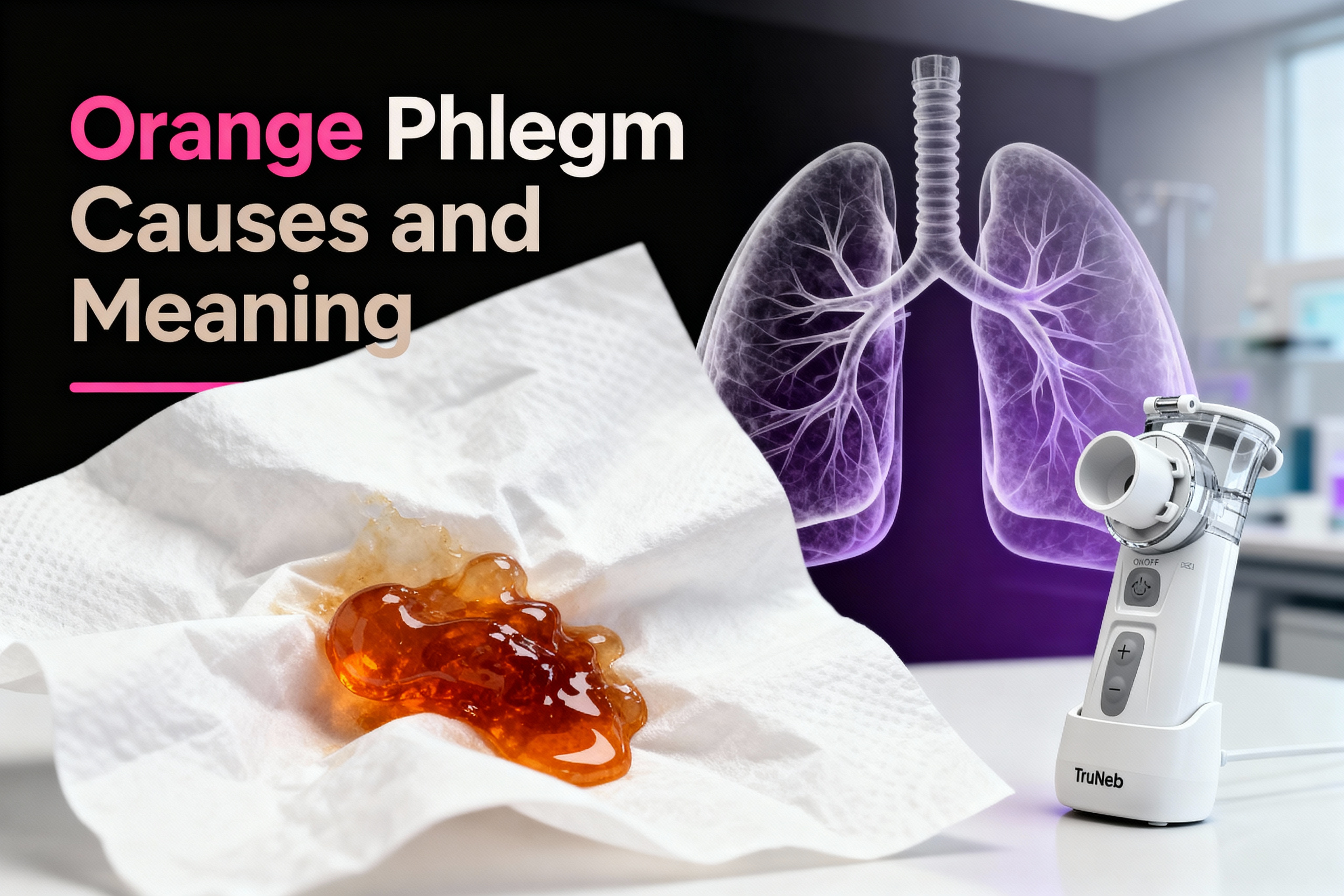
What Does Orange Phlegm Mean?
Orange or rust-colored phlegm usually means there is a small amount of dried blood in your mucus. As blood breaks down, it can tint mucus orange or brown. This can happen with infections, irritation in your nose or throat, or after breathing in smoke or heavy dust.
One-liner: Orange phlegm typically points to dried blood mixing with mucus, often from infection or irritation.
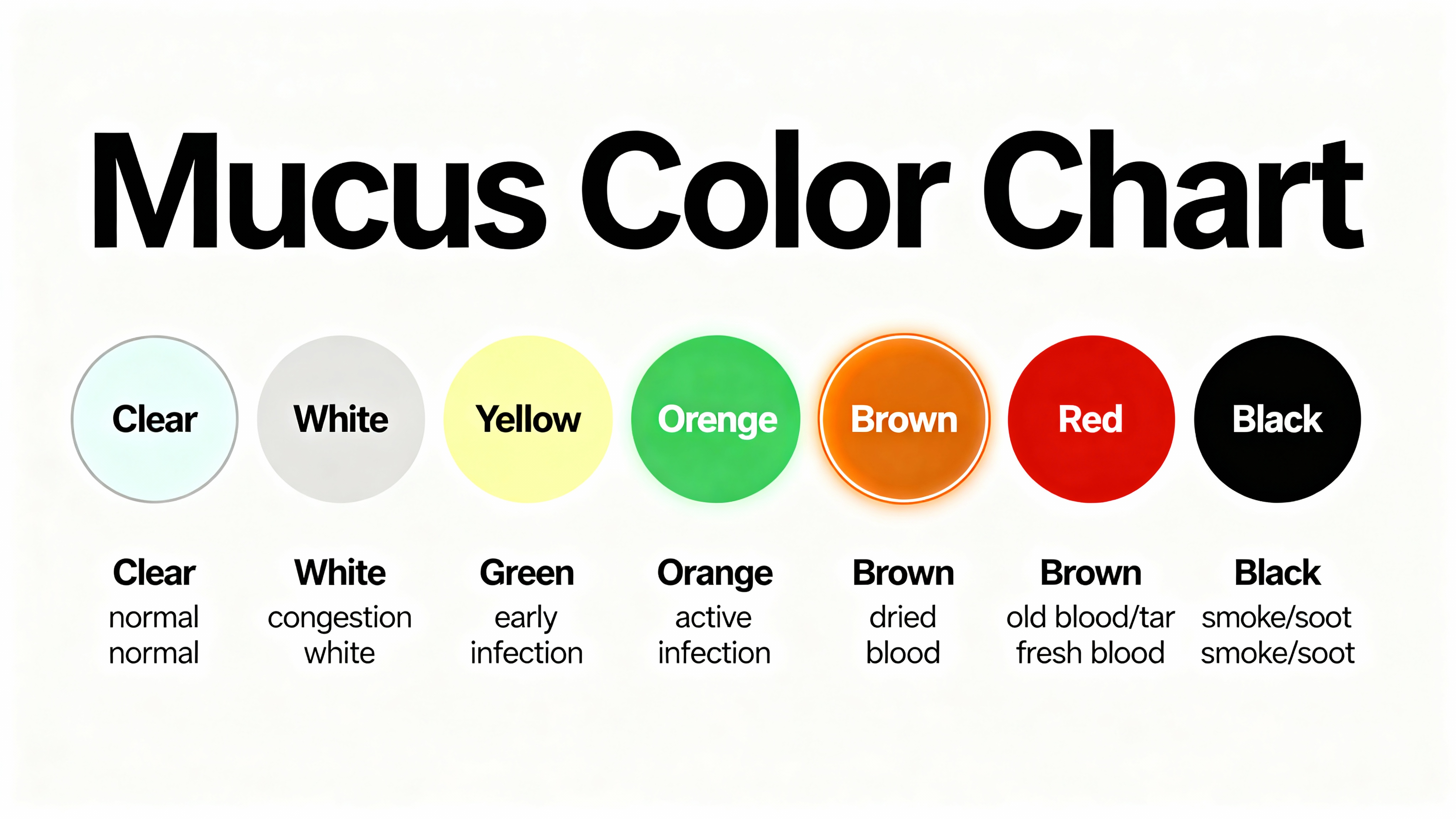
The Mucus Color Chart
- Clear: Normal baseline.
- White: Congestion or mild irritation.
- Yellow: Infection can be starting.
- Green: Strong immune response, commonly an infection.
- Orange/Rust: Usually dried blood mixed into mucus (or phlegm).
- Brown: Old blood or staining from smoke/tar.
- Red/Pink: Fresh blood, monitor and seek care if it’s more than streaks.
- Black: Smoke/soot staining, rarely a serious fungal infection—seek care if it persists or you feel unwell.
A simple color guide: orange sits between fresh blood (red) and older debris or tar (brown), usually indicating dried blood.
Color alone doesn’t diagnose the cause—pair it with your symptoms.
Causes of Orange (Rust-Colored) Phlegm
Infections that can tint phlegm orange
Respiratory infections are the most common cause. Bacterial pneumonia, especially pneumococcal pneumonia, is classically linked to rust-colored sputum. People usually also have fever, chest pain, and a deep cough or shortness of breath. Acute or chronic bronchitis can start yellow/green and sometimes show small blood streaks that look orange-brown. Sinus infections can irritate the nose lining, and dried blood from the nose can drain into mucus and change its color.
- Clues: Fever, chest discomfort, shortness of breath, sinus pressure, fatigue.
Blood and irritation
Small nosebleeds from dry air, frequent nose blowing, or a scratch in the throat can add tiny amounts of blood to mucus. Post-nasal drip after a minor nasal bleed can tint sputum orange, and it’s usually temporary.
- Clues: Recent nosebleed, dry indoor air, sore or scratchy throat.
Smoking and pollutants
Smoke and tar can stain mucus brownish-orange. Long-term smokers commonly notice discolored morning phlegm. Breathing in heavy dust or certain particles at work can also tint mucus while irritating airways. In people with COPD (chronic obstructive pulmonary disease) or chronic bronchitis, inflamed airways and frequent cough can lead to orange-tinged sputum at times.
- Clues: Smoking history, COPD or chronic bronchitis, dusty environments, symptoms worse after exposure.
Rare or serious causes
Less commonly, ongoing blood-streaked sputum can be linked to conditions like tuberculosis (TB), bronchiectasis, or lung cancer. Persistent hemoptysis (coughing up blood) needs prompt medical evaluation. Pink, frothy sputum points more toward heart or fluid problems, not orange.
- Clues: Cough lasting 3 weeks or more, weight loss, night sweats, large amounts of blood.
One-liner: Most orange phlegm comes from a little dried blood due to infection or irritation; persistent or heavy bleeding needs medical care.
When Is Orange Phlegm a Red Flag?
Seek medical care if you notice:
- A lot of blood (hemoptysis) — more than small streaks or bright red clots.
- High fever (around 102°F / 39°C or higher) or chest pain.
- Shortness of breath or rapid, hard breathing.
- Symptoms lasting more than 3–5 days without improvement, or symptoms that keep coming back.
- Unintentional weight loss or night sweats.
⚠️ If you cough up a large amount of blood, have severe trouble breathing, or chest pain that’s sudden or worsening, seek emergency care immediately.
One-liner: Small orange streaks can be minor, but heavy blood, high fever, breathing trouble, or lasting symptoms need a doctor’s check.
How Orange Phlegm Is Diagnosed
- History and exam: Your doctor asks about cough, fever, chest pain, travel, smoking, and exposures. They listen to your lungs and check your nose and throat.
- Chest X-ray: Looks for pneumonia, other infections, or masses.
- Sputum culture: Tests a mucus sample to identify bacteria that can be causing infection.
- Blood tests: A complete blood count can show signs of infection, with other tests as needed.
- TB testing: A TB skin test or blood test (IGRA/QuantiFERON) is used when TB is a concern.
- CT scan or bronchoscopy: Used if symptoms continue or there are red flags to rule out more serious problems.
One-liner: Doctors start with an exam and may add tests like a chest X-ray and sputum culture to find the cause.
Treatment and Home Care
Treatment depends on the cause. A doctor can prescribe antibiotics for some bacterial infections or other medicines for lung conditions. For home care:
- Drink plenty of fluids: Helps thin and move mucus.
- Use a humidifier or steam: Moist air soothes irritated airways.
- Rest: Your body needs energy to heal.
- Consider an expectorant (guaifenesin): An expectorant like guaifenesin can help loosen phlegm—ask your doctor if it’s a fit.
- Over-the-counter pain relievers: Options like acetaminophen or ibuprofen can ease fever or aches—ask your doctor if they’re right for you.
- Saltwater gargle or gentle nasal rinse: Can clear irritants and small amounts of dried blood.
- Avoid smoke and irritants: Quitting smoking helps reduce stained, inflamed mucus.
- Consider delivery tools your doctor recommends: A portable nebulizer like the TruNeb™ portable mesh nebulizer can help deliver prescribed saline or medication at home or on the go. You might see boxes labeled "steam inhaler"—these are not the same as nebulizers and aren’t used to deliver medications.
Safety note: Talk to your doctor before trying a new medication or changing a treatment plan. Talk to your doctor if symptoms don’t improve in 3–5 days, get worse, or you’re unsure about the cause.
One-liner: Hydration, humidified air, rest, and avoiding irritants commonly help while your doctor treats the root cause.
Color Comparison (See Chart Above)
| Color | Meaning | Typical clues |
|---|---|---|
| Red/Pink | Fresh blood | Bright red streaks or clots; may follow injury or heavy coughing |
| Orange/Rust | Dried blood in mucus | Often after infection, a nosebleed, or irritation |
| Brown | Older blood or tar staining | Smoking history; lingering discoloration |
| Green | Active immune response/infection | Fever, facial pressure, chesty cough |
| Black | Smoke/soot staining | Heavy smoke exposure; seek care if persistent or you feel unwell |
Frequently Asked Questions
Tap or click a question below to see the answer:
Orange or rust-colored phlegm usually means a small amount of dried blood in your mucus, often from an infection or irritation. Color alone doesn’t diagnose the cause—watch your symptoms over 3–5 days and seek care for red flags.
It can be. Rust-colored sputum is a classic finding in some bacterial pneumonias, especially with fever, chest pain, and shortness of breath. Color alone isn’t enough for diagnosis; doctors use an exam and tests like a chest X-ray.
Both can point to blood mixing with mucus. Orange tends to reflect newer dried blood, while brown often means older blood or staining from smoke/tar.
Allergies usually cause clear or white mucus. Strong sneezing or nose blowing can sometimes break tiny vessels, adding a little blood that looks orange or rusty for a short time. If color changes last or you feel ill, get checked.
Key Takeaways
- Orange phlegm usually means a small amount of dried blood in your mucus.
- Common causes include infections, nose/throat irritation, smoking, or dust exposure.
- See a doctor if there’s a lot of blood, high fever, trouble breathing, or symptoms that don’t improve.
If you’re unsure about your symptoms, a quick medical check can help you feel confident about next steps.
Disclaimer: This article is for informational purposes and isn’t a substitute for professional medical advice. Always talk with your doctor about your symptoms and treatment options.

